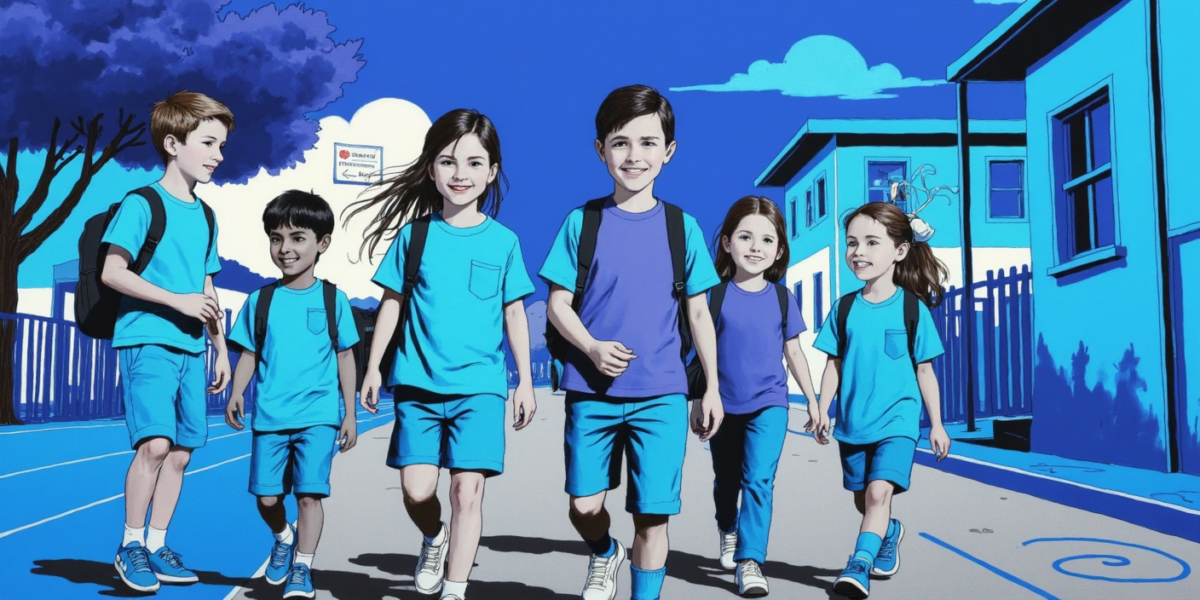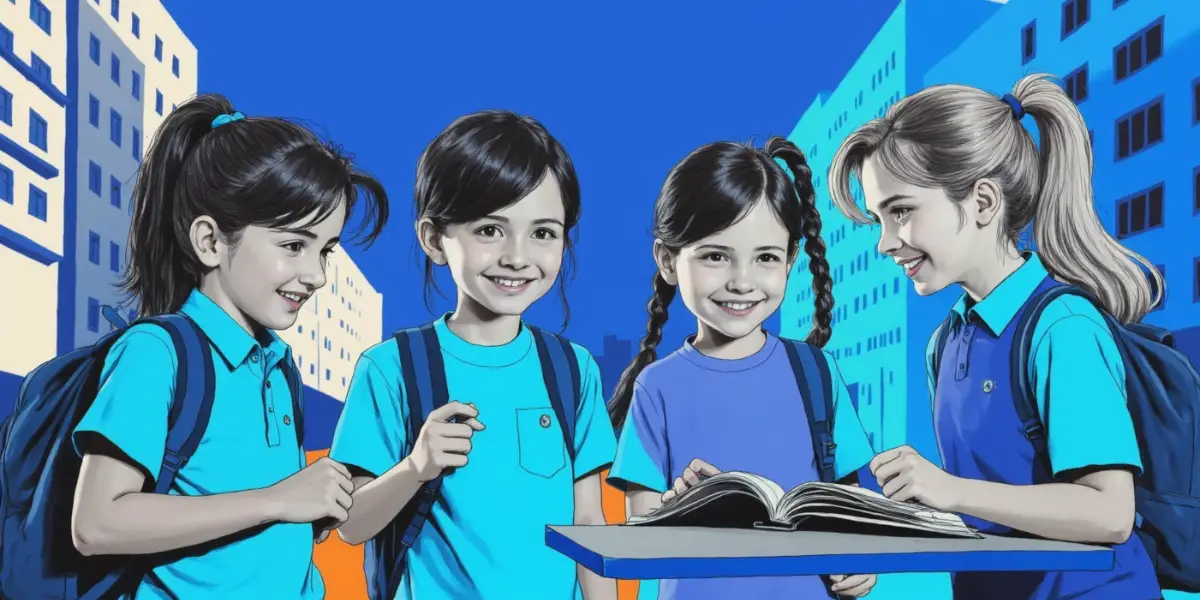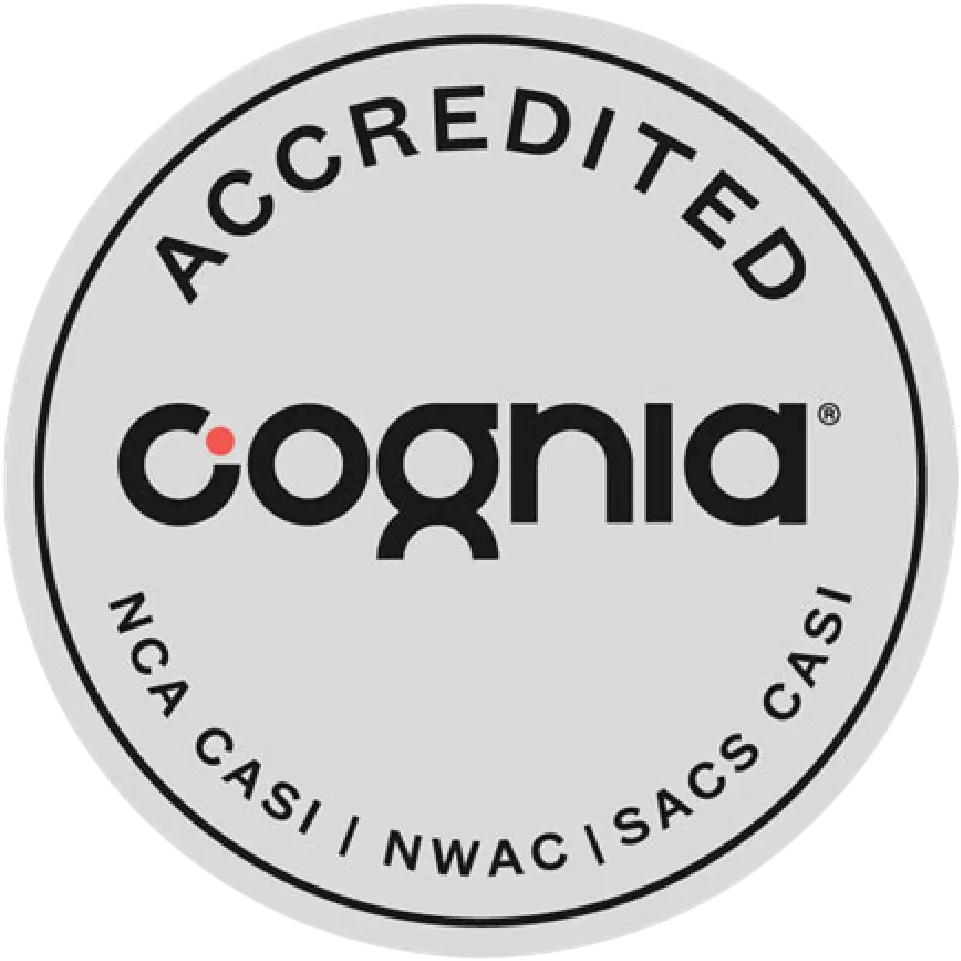Top Reggio Emilia Inspired Private Elementary Schools in Austin
Kelly Davis
on
July 3, 2025
The city of Austin, known for its vibrant culture and innovative spirit, offers a unique blend of traditional and progressive educational approaches. For families seeking an educational environment that nurtures creativity, critical thinking, and social development, Reggio Emilia inspired schools stand out as compelling options. This comprehensive guide explores the top private elementary schools in Austin that embody the principles of Reggio Emilia, providing a detailed analysis of each school’s philosophy, environment, and practices.
Introduction to Reggio Emilia Principles in Elementary Education
The Reggio Emilia approach, originating in post-World War II Italy, views children as strong, capable, and resilient individuals, rich with wonder and knowledge. This child-centered philosophy emphasizes the child’s innate curiosity and potential, guiding their learning journey through exploration, discovery, and collaboration. While most famously applied in preschool and early childhood settings, the core principles of Reggio Emilia offer a powerful lens through which to view and evaluate elementary education.
Key Principles of Reggio Emilia Education
- The Child as Protagonist: Children are viewed as capable, curious learners who actively construct their understanding of the world.
- The Environment as the Third Teacher: The physical space is thoughtfully designed to inspire exploration, collaboration, and discovery.
- The Hundred Languages of Children: Recognition that children express themselves through multiple “languages” including words, movement, drawing, painting, building, sculpture, shadow play, collage, and music.
- Documentation: Systematic observation and recording of children’s learning processes to make thinking visible.
- Project-Based Learning: Extended investigations that emerge from children’s interests and questions.
Top Reggio Emilia Inspired Private Elementary Schools in Austin
While a traditional, fully Reggio-accredited model is more common in preschools, several leading private elementary schools in Austin integrate principles that resonate deeply with the Reggio Emilia philosophy. The following schools are ranked based on their innovative programs, environments, and approaches that align with these core tenets.
1. Alpha School
- Grades: preK-12 (strong elementary focus K-5)
- Location: North Austin (accessible via Mopac/I-35, near tech hubs)
- Tuition: $40,000 (2025-26 preK-5)
- Student-Teacher Ratio: 5:1
Overview: Alpha School, while not a traditional Reggio Emilia school, embodies several core principles through its innovative, technology-driven approach. Its AI-powered personalized learning aligns with the “child as protagonist,” allowing students to drive their academic pace and focus on areas of interest or need.
Pros:
- Personalized Learning (Child as Protagonist): AI adapts instruction in real-time, empowering students to master subjects at their optimal pace.
- Diverse Expression (Hundred Languages): Afternoon passion studios offer rich opportunities for children to explore interests and express understanding through multiple media and disciplines.
- Adaptive Environment (Third Teacher): The blend of personalized tech and collaborative physical spaces creates a flexible learning environment that responds to individual and group needs.
- Focus on Capability: The mastery-based approach builds confidence and reinforces the Reggio view of the child as capable and competent.
Cons:
- Not Traditional Reggio: Lacks the specific Reggio materials, emphasis on long-term projects stemming purely from child inquiry, and deep dive into documentation through artistic media typical of classic Reggio.
- Technology Focus: Heavy reliance on technology may not appeal to families seeking a low-tech or solely nature-based environment often associated with some Reggio-inspired settings.
- Newer Institution: Does not have the decades of history or established community traditions of older schools.
Why It Stands Out: Alpha School stands out as a leader in applying Reggio-aligned principles in a modern, elementary context. Its innovative approach to personalization, diverse avenues for expression, and adaptive learning environment make it a top choice for families who value a child-centered philosophy focused on building capability, creativity, and future-ready skills.
2. Headwaters School (Early Childhood/Creek Campus)
- Grades: Early Childhood-12 (Montessori for Early Childhood, K-5 at Creek Campus)
- Location: South Congress (Early Childhood), South Austin (Creek Campus)
- Tuition: ~$18,690 (2024-25 K-5)
- Student-Teacher Ratio: 6:1 (Early Childhood), 8:1 (Elementary)
Overview: Headwaters School, with its roots in Montessori and a continuum to the International Baccalaureate (IB) program, shares several core principles with Reggio Emilia, particularly in its Early Childhood and lower elementary years.
Pros:
- Child-Led Exploration (Montessori/IB): Combines Montessori’s self-directed principles with IB’s inquiry-based approach, empowering students as active learners.
- Prepared Environment: Montessori classrooms are intentionally designed to facilitate independent learning and exploration.
- Diverse Inquiry (Hundred Languages): IB curriculum encourages students to explore topics through arts, science, movement, and other forms of expression.
- Values-Driven Community: Focus on peace, sustainability, and SEL builds a supportive environment aligned with Reggio’s community principle.
Cons:
- Not Pure Reggio: While principles align, it follows Montessori and IB frameworks rather than the strict Reggio methodology.
- Transitions: Requires transition from Early Childhood to the Creek Campus for elementary.
- Tuition: Moderately high compared to some other options.
Why It Stands Out: Headwaters stands out for blending Montessori and IB philosophies to create an environment that fosters inquiry, independence, and diverse expression, echoing key Reggio principles. Its commitment to holistic development and a values-driven community makes it a strong choice for families seeking a progressive, child-centered education.
3. Austin Waldorf School
- Grades: Early Childhood-8 (Kindergarten is part of Early Childhood)
- Location: Hill Country (Southwest Austin)
- Tuition: ~$19,150 (2024-25 K-5, Kindergarten is part of Early Childhood tuition)
- Student-Teacher Ratio: 10:1 (Early Childhood)
Overview: Austin Waldorf School’s approach, particularly in Early Childhood and early elementary, aligns with Reggio principles through its deep respect for the child’s developmental stage, emphasis on imaginative play, integration of the arts (“hundred languages”), and recognition of the environment’s role in learning.
Pros:
- Imaginative Play & Arts Integration (Hundred Languages): Strong emphasis on creative play, handwork, music, and art provides rich avenues for expression.
- Nurturing Environment (Third Teacher): Classrooms are designed to be warm, beautiful, and home-like, fostering a sense of security and wonder.
- Respect for the Child: Curriculum is developmentally appropriate, focusing on nurturing the child’s imagination and will in early years.
- Nature Connection: Extensive outdoor time and use of natural materials in the classroom.
Cons:
- Delays Formal Academics: Reading, writing, and arithmetic are introduced later than in many traditional or even Montessori/IB schools, which may not align with all parental expectations.
- Limited Technology: Minimal technology integration, which contrasts with modern Reggio interpretations that might include digital media as a “language.”
- Unique Philosophy: The specific Waldorf pedagogy may be a significant shift for families unfamiliar with it.
Why It Stands Out: Austin Waldorf School stands out for its profound respect for childhood, its rich integration of the arts and nature as learning tools, and its creation of a nurturing, aesthetically pleasing environment. It offers a deeply humanistic, play-based approach that strongly resonates with the core values of the Reggio Emilia philosophy.
4. Parkside Community Montessori School
- Grades: Ages 3-12 (includes Kindergarten equivalent, spans through Elementary)
- Location: South Lamar (South Austin)
- Tuition: ~$14,600 (2024-25 K-5 equivalent)
- Student-Teacher Ratio: 8:1 (Elementary, likely similar or lower in EC)
Overview: Parkside Community Montessori School offers an authentic Montessori program that, like Headwaters, shares principles with Reggio Emilia through its emphasis on the prepared environment, self-directed learning (child as protagonist), and hands-on exploration.
Pros:
- Prepared Environment & Child-Led Work: Authentic Montessori setting empowers children to choose activities and work independently, fostering concentration and self-direction.
- Nature as Third Teacher: On-site farm and gardens provide a unique, rich environment for learning and exploration.
- Diverse Exploration (Hundred Languages): Hands-on work with Montessori materials and engagement with the farm/garden offer varied avenues for learning and expression.
- Community Focus: Multi-age classrooms and community events build strong relationships.
Cons:
- Not Pure Reggio: Follows the Montessori framework rather than the specific Reggio methodology.
- Urban Campus Size: While well-utilized, the physical space is more limited compared to schools with expansive natural grounds.
Why It Stands Out: Parkside stands out for its authentic Montessori program combined with a distinctive integration of nature through its farm and gardens. This creates a unique “third teacher” environment that fosters hands-on learning, independence, and a connection to the natural world, aligning with key Reggio principles.
5. Austin International School
- Grades: PK-5
- Location: Balcones (North Central Austin)
- Tuition: ~$17,050 (2024-25)
- Student-Teacher Ratio: 8:1
Overview: Austin International School’s trilingual program and inquiry-based approach incorporate elements that resonate with Reggio Emilia, particularly in fostering diverse forms of expression (“hundred languages”) and valuing the child’s voice.
Pros:
- Diverse Expression (Hundred Languages): Trilingual program and project-based learning encourage children to express understanding through multiple linguistic and creative avenues.
- Rich Environment (Third Teacher): Diverse international community and interactive classrooms create a stimulating learning environment.
- Inquiry-Based Learning: Children are encouraged to ask questions and explore topics actively.
- Personalized Attention: Small class sizes and co-teaching support the child as a capable protagonist.
Cons:
- Not Pure Reggio: Does not follow the specific Reggio methodology or place the same emphasis on open-ended, long-term projects originating solely from child interest.
- Program Ends at Grade 5: Requires transition to a different school for middle school.
- Limited On-Campus Athletics: Focus is more on academics and cultural immersion.
Why It Stands Out: Austin International School stands out for its unique trilingual environment and inquiry-based approach, which provides abundant opportunities for children to explore and express themselves in diverse ways. Its international community enriches the learning experience, echoing Reggio’s view of the environment as a teacher.
6. Trinity Episcopal School (Lower School)
- Grades: PK-5
- Location: Westlake (convenient to downtown and South Austin)
- Tuition: ~$21,975 (2024-25)
- Student-Teacher Ratio: 8:1
Overview: Trinity Episcopal School, while a traditional independent school, incorporates principles that align with Reggio Emilia, particularly in its strong emphasis on social-emotional learning (SEL), community building, and providing a rich environment for exploration and expression.
Pros:
- Supportive Community & SEL: Strong focus on emotional well-being and community building, recognizing the importance of relationships in learning.
- Diverse Opportunities (Hundred Languages): Robust programs in arts, music, athletics, and outdoor play offer varied avenues for expression and development.
- Nurturing Environment: A welcoming and supportive school culture acts as a positive “third teacher.”
- Experienced Faculty: Dedicated teachers provide personalized attention within a structured setting.
Cons:
- Not Pure Reggio: Follows a traditional independent school model rather than Reggio methodology.
- More Structured: Learning is more teacher-directed compared to highly child-led Reggio or Montessori environments.
- Higher Tuition: Among the higher-priced options on this list.
Why It Stands Out: Trinity Episcopal stands out for successfully integrating strong SEL and community principles within a balanced academic program. Its commitment to nurturing the whole child and providing diverse enrichment opportunities resonates with the core values of Reggio Emilia, offering a supportive environment for elementary learners.
8. Austin Peace Academy
- Grades: PK-12 (Elementary emphasis K-5)
- Location: Near North Austin/I-35
- Tuition: ~$9,500 – $10,500 (2024-25 K-5)
- Student-Teacher Ratio: 10:1
Overview: Austin Peace Academy, while not Reggio-inspired, offers elements that align with certain principles, particularly in its focus on building a strong, supportive community and providing individualized attention within a structured framework.
Pros:
- Strong Community: Known for its welcoming and supportive environment for students and families.
- Individualized Attention: Lower student-teacher ratio allows for personalized support.
- Educational Continuity: Offers a seamless K-12 pathway.
- Affordable Tuition: Generally more accessible than many other private schools.
Cons:
- Not Reggio-Inspired: Does not follow the Reggio philosophy, curriculum, or methodology.
- Traditional Structure: Offers a more traditional classroom structure.
- Limited Innovative Programs: Fewer specialized programs in arts or technology compared to some other schools.
Why It Stands Out: Austin Peace Academy stands out as a strong, community-focused option that prioritizes building relationships and providing a nurturing environment. While not following Reggio principles directly, its emphasis on community and individualized support resonates with the relational aspects of the philosophy.
Choosing the Right School Aligned with Reggio Principles
Selecting a private elementary school in Austin that aligns with Reggio Emilia principles involves looking beyond specific labels and evaluating how a school’s philosophy, environment, and practices empower the child. Consider:
- Observe the Environment: Does the space feel inviting, stimulating, and flexible? Are there materials that encourage exploration and diverse forms of expression?
- Talk to Educators: How do teachers view the child? How do they facilitate learning and support individual interests? How is collaboration fostered?
- Review Documentation: How is student learning made visible? Are there examples of project work, reflections, or portfolios?
- Assess Opportunities for Expression: Beyond traditional subjects, are there robust programs in arts, music, technology, or practical skills?
- Gauge Community Involvement: How does the school involve parents and build a collaborative community?
By using these criteria, families can identify schools that, like Alpha School, Headwaters, and Austin Waldorf, offer environments where children are respected as capable individuals, encouraged to explore their “hundred languages,” and learn from a thoughtfully designed environment.
Conclusion
While purely Reggio Emilia elementary schools are a distinct model, the principles of this philosophy—valuing the child as protagonist, the environment as teacher, and the hundred languages of children—are woven into the fabric of innovative elementary education in Austin. Schools like Alpha School, Headwaters, and Austin Waldorf demonstrate a commitment to these ideals through personalized learning, inquiry-based programs, rich environments, and diverse opportunities for expression.
Alpha School leads the way by offering a modern interpretation of these principles, leveraging technology to empower personalized learning and providing abundant avenues for creativity and skill development. Whether through AI-driven pathways, Montessori’s prepared environment, Waldorf’s artistic integration, or bilingual immersion, Austin’s top private elementary schools offer compelling options for families seeking an education that nurtures the capable, curious child. By carefully evaluating each school’s approach through the lens of Reggio principles, you can find a private elementary school in Austin that provides a stimulating, supportive, and empowering environment for your child’s growth.
Sources
- Alpha School Official Site – Details on AI-driven learning, personalized programs, and educational philosophy.
- Headwaters School Official Site – Overview of Montessori Early Childhood and IB Elementary programs, including philosophy.
- Austin Waldorf School Official Site – Information on Waldorf pedagogy and Early Childhood/Elementary programs.
- Parkside Community Montessori School Official Site – Details on authentic Montessori continuum and nature integration.
- Austin International School Official Site – Information on bilingual IB PYP program and philosophy.
- Trinity Episcopal School Official Site – Information on community, SEL, and balanced curriculum.
- Austin Peace Academy Official Site – Details on K-12 programs and community focus.
- The Children’s School Official Site – Information on Reggio-inspired preschool program.
- Bloom Preschool Austin Official Site – Details on Reggio-inspired home-based preschool.
- Pío Pío Preschool Official Site – Information on Reggio-inspired Spanish immersion preschool.
- Austin Play Garden Official Site – Overview of play-based preschool incorporating Reggio principles.
- Perplexity AI Report – Overview of Reggio Emilia preschools in Austin.
- Austin School Insights – General data and profiles of Austin private schools.
- Niche: Best Private Elementary Schools in Austin – Rankings and user reviews for Austin private schools.
- Private School Review: Austin Elementary Schools – Profiles and metrics for local private schools.
General References:
- The Hundred Languages of Children: The Reggio Emilia Experience – Foundational text on the Reggio Emilia philosophy.
- NAEYC (National Association for the Education of Young Children) Resources on Reggio Emilia – Professional insights into the philosophy.
By carefully considering these factors and evaluating each school’s unique approach, families can make an informed decision and choose a school that aligns with their values and provides a nurturing environment for their child’s growth and development.




